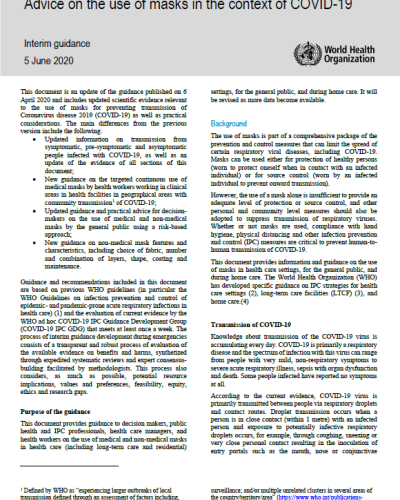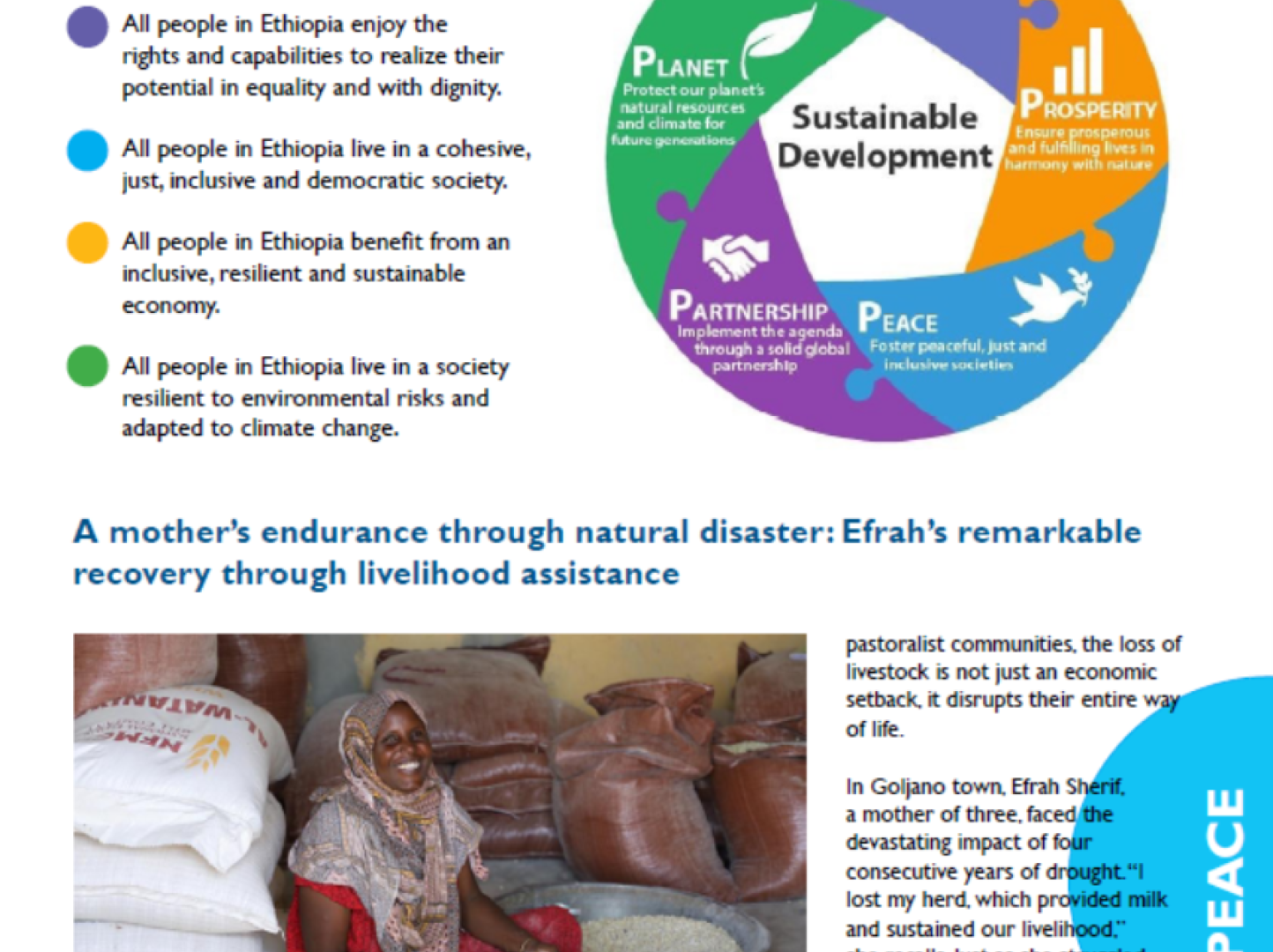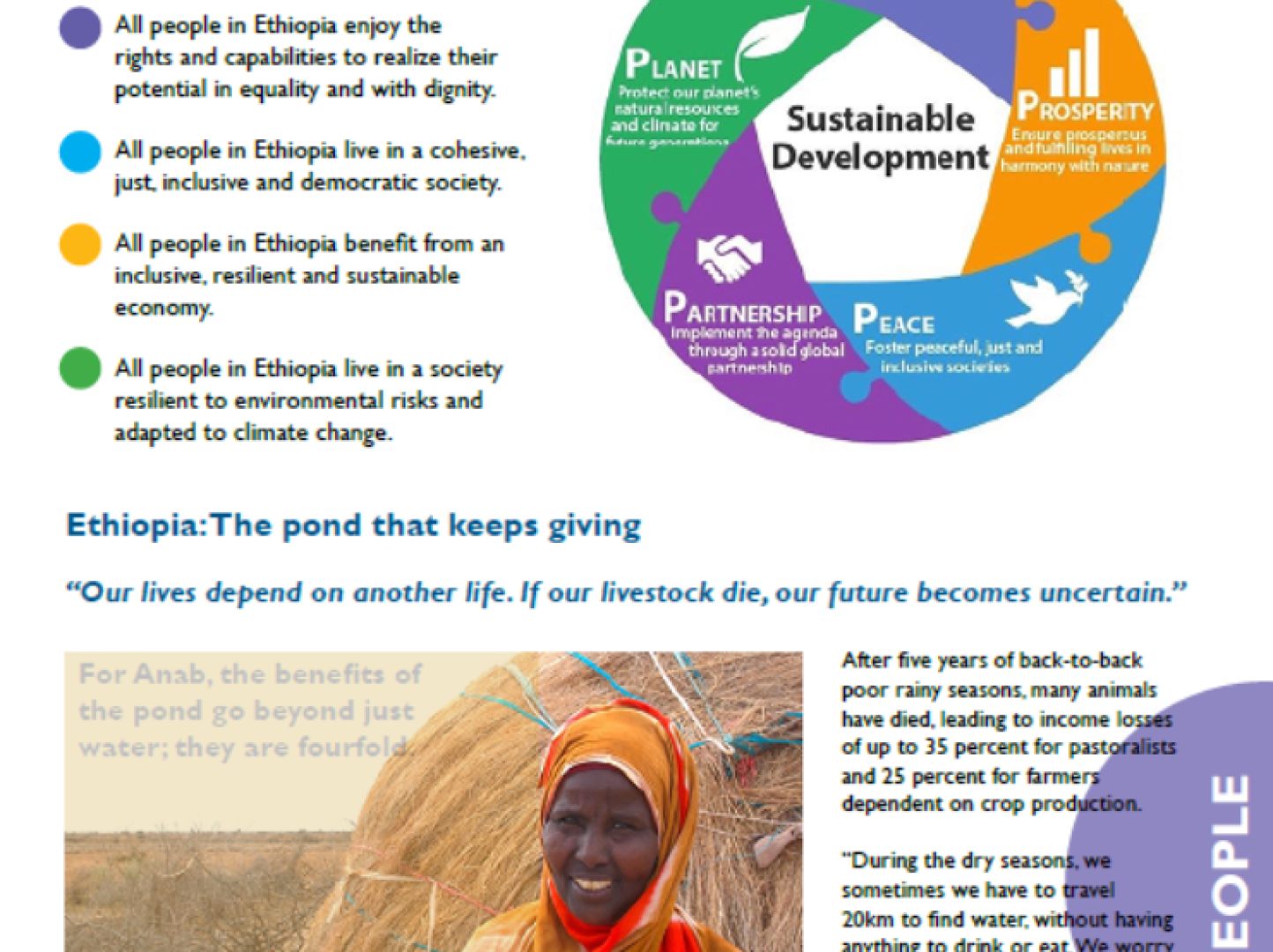Advice on the use of masks in the context of COVID-19

This document is an update of the guidance published on 6 April 2020 and includes updated scientific evidence relevant to the use of masks for preventing transmission of Coronavirus disease 2019 (COVID-19) as well as practical considerations. The main differences from the previous version include the following:
- Updated information on transmission from symptomatic, pre-symptomatic and asymptomatic people infected with COVID-19, as well as an update of the evidence of all sections of this document;
- New guidance on the targeted continuous use of medical masks by health workers working in clinical areas in health facilities in geographical areas with community transmission1 of COVID-19;
- Updated guidance and practical advice for decision-makers on the use of medical and non-medical masks by the general public using a risk-based approach;
- New guidance on non-medical mask features and characteristics, including choice of fabric, number and combination of layers, shape, coating and maintenance
Guidance and recommendations included in this document are based on previous WHO guidelines (in particular the WHO Guidelines on infection prevention and control of epidemic- and pandemic-prone acute respiratory infections in health care) (1) and the evaluation of current evidence by the WHO ad hoc COVID-19 IPC Guidance Development Group (COVID-19 IPC GDG) that meets at least once a week. The process of interim guidance development during emergencies consists of a transparent and robust process of evaluation of the available evidence on benefits and harms, synthetized through expedited systematic reviews and expert consensus building facilitated by methodologists. This process also considers, as much as possible, potential resource implications, values and preferences, feasibility, equity, ethics and research gaps.
Purpose of the guidance
This document provides guidance to decision makers, public health and IPC professionals, health care managers, and health workers on the use of medical and non-medical masks in health care (including long-term care and residential) settings, for the general public, and during home care. It will be revised as more data become available.
Background
The use of masks is part of a comprehensive package of the prevention and control measures that can limit the spread of certain respiratory viral diseases, including COVID-19. Masks can be used either for protection of healthy persons (worn to protect oneself when in contact with an infected individual) or for source control (worn by an infected individual to prevent onward transmission). However, the use of a mask alone is insufficient to provide an adequate level of protection or source control, and other personal and community level measures should also be adopted to suppress transmission of respiratory viruses. Whether or not masks are used, compliance with hand hygiene, physical distancing and other infection prevention and control (IPC) measures are critical to prevent human-to-human transmission of COVID-19.
This document provides information and guidance on the use of masks in health care settings, for the general public, and during home care. The World Health Organization (WHO) has developed specific guidance on IPC strategies for health care settings, long-term care facilities (LTCF) , and home care.




